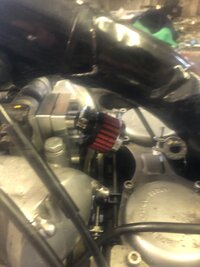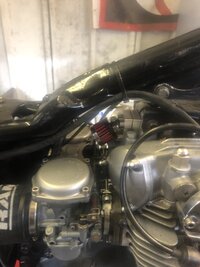Max Midnight
XS650 Addict
Water can collect due to condensation during the warm up period. This happens regardless of how blow by is dealt with.
When at operating temperature any water will be gaseous (a.k.a. steam) and therefore separates from the oil.
As Mr Charles13 explains above, an air (or more correctly, gas)/ oil separator allows the volatile elements to either go to atmosphere or fed into the inlet to be burnt. The oil can be fed back into the engine.
I've done this on my V Max for many years with no ill effect.
The condensation formed during warm up is one reason why I don't advise running a motor to 'warm it up'. Unless it gets to operating temperature any condensation and other normally volatile elements stay liquid which, over time, may cause damage.
When at operating temperature any water will be gaseous (a.k.a. steam) and therefore separates from the oil.
As Mr Charles13 explains above, an air (or more correctly, gas)/ oil separator allows the volatile elements to either go to atmosphere or fed into the inlet to be burnt. The oil can be fed back into the engine.
I've done this on my V Max for many years with no ill effect.
The condensation formed during warm up is one reason why I don't advise running a motor to 'warm it up'. Unless it gets to operating temperature any condensation and other normally volatile elements stay liquid which, over time, may cause damage.


